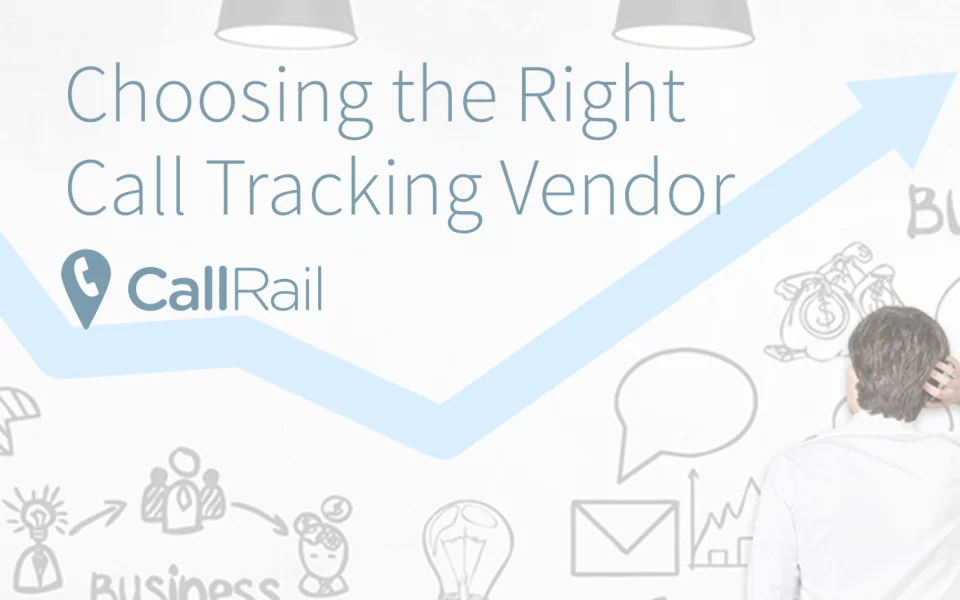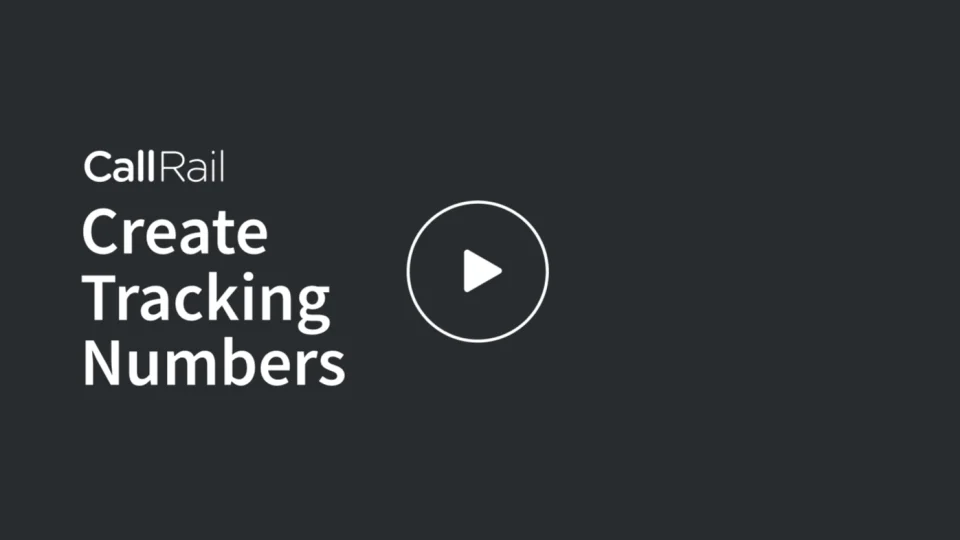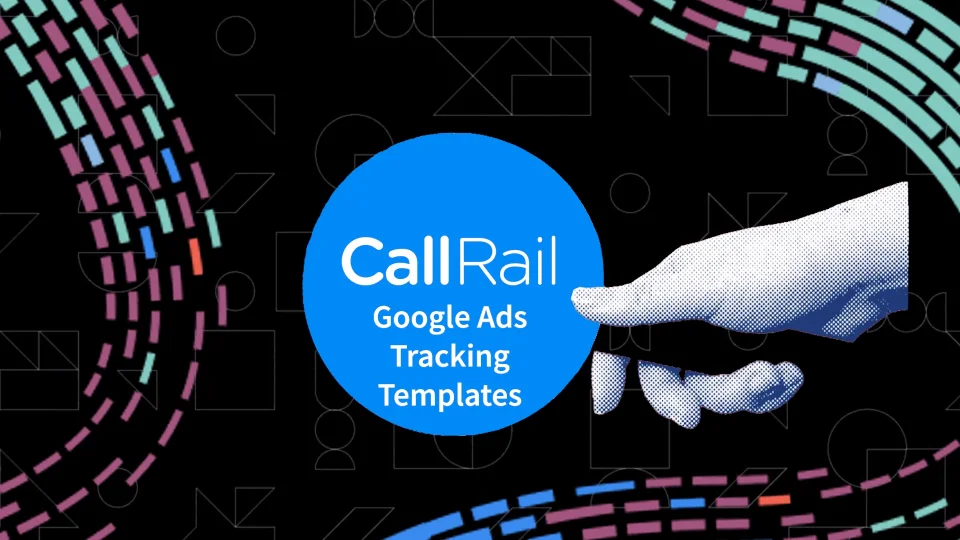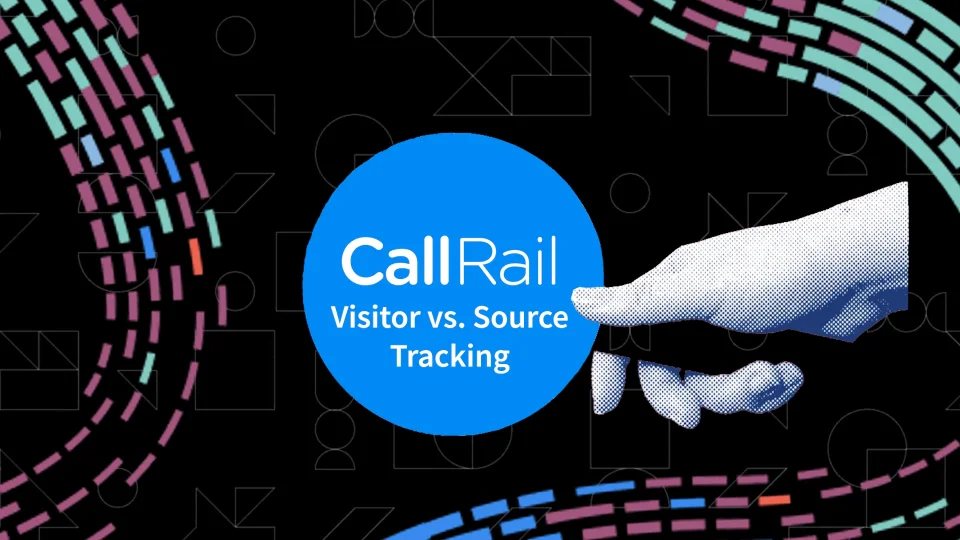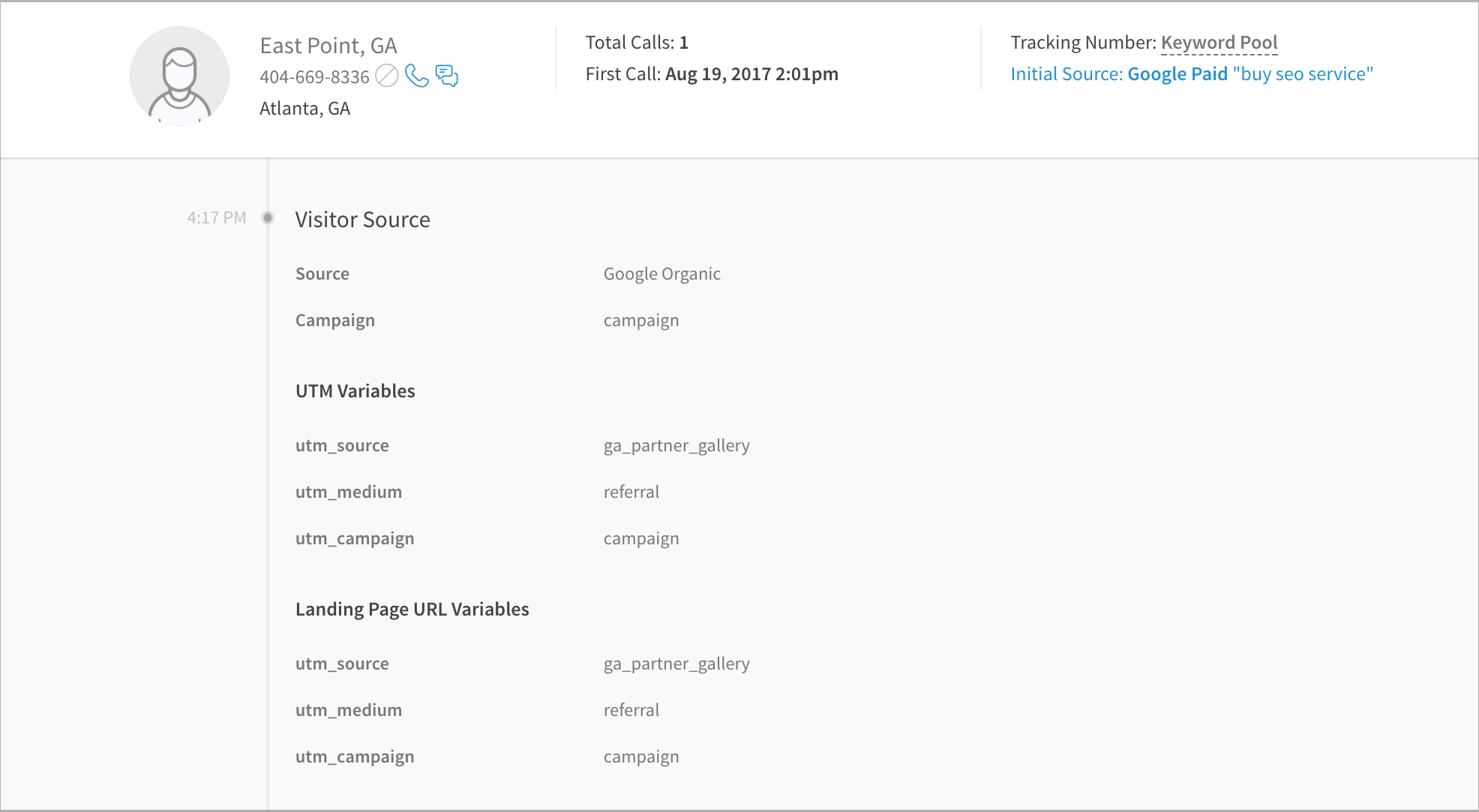This is a guest post by Seth Rand, Co-Founder and CEO at Wizard Digital. For over 18 years Seth has worked with thousands of businesses to offer custom, responsive website design, e-commerce website development and optimization, search engine optimization and marketing, pay per click campaign management, social media management, social media advertising, email marketing, online content marketing and more. Throughout his career, he has managed over $50 million in Google Advertising to help his clients achieve their business goals through digital advertising marketing.
The phones at Miles of Smiles Dentistry were ringing off the hook, but the front desk staff didn’t look happy.
Not only did Miles of Smiles have great online reviews — and word of mouth — they’d ramped up their marketing efforts. They just weren’t ready for the rapid rise of incoming calls. Most practices would consider this a good problem, but after spending too much time on hold, many of Miles of Smiles’ patients lost patience.
They gave up, hung up, and called other practices.
Soon the practice began to lose patients. Without a proper incoming call strategy, they were missing out on new patients while struggling to maintain recurring revenue from existing ones.
We serve lots of dental practices like Miles of Smiles at Bleu 3, so we know each call is a sales opportunity won or lost. It’s the best chance practices have to create a good first impression that’ll convert new patients to loyal brand advocates.
But when calls fall through the cracks? Well, according to spectrio, more than 60% of callers put on hold hang up. Not only does this outdated customer service practice lead to poor business performance, it invites prospective and current patients to visit a competitor.
The solution? Call tracking software. It can help you understand the sources generating your incoming calls, measure the quality of your dental customer service, and equip you with the tools to market your practice better.
Understanding what call tracking software is and what it does
Call tracking software reveals the sources of incoming phone calls, whether it’s an ad, billboard, social media post, website, or something else. With the help of dynamic number insertion (DNI), each marketing channel — online and off — has a unique phone number assigned to it.
Doing so allows businesses to better measure the success of their marketing efforts — helping them drive better outcomes through the insights the tool generates. For example, they can:
- Find and calculate the real return on investment from digital advertising campaigns
- See what digital channels generate the most prospective patients
- View the precise ad and keyword that converted a patient
But the benefits of call tracking software go beyond getting visibility into which marketing works. It’s also great for training staff and improving customer service. Through call recording, businesses can review calls to understand the topic of conversation and use that insight to pinpoint areas of improvement and source solutions to patients’ common challenges.
Top 2 reasons dental clinics need call tracking software
For dental practices, there are several advantages of using call tracking software, with the two most important being improving customer service and making smarter marketing decisions that grow your bottom line. Let’s take a closer look.
1. Call tracking improves customer service experiences
First impressions can make a big difference to prospective patients. But do you know for sure how your employees are handling these make-or-break opportunities?
When a waiting room is full, it can be hard for your front desk staff to provide impeccable customer service, both in-person and over the phone. If the patients who call your clinic can't speak to someone, there is a chance they will go to your competition.
This is where call tracking can help. It lets you tap into your dental practice’s call analytics and export a missed call report to get a better understanding of your missed opportunities: When they happen, at what time of day, and the number of people working within that time frame.
So, if you see that most missed calls happen on Tuesdays at 2:00 pm, you can boost up the number of staff available at that time to make sure you capture every potential patient. But making sure you have the right number of employees working to answer the phones is just half of the customer service equation. How employees interact with new and current patients on the phone is the other.
With call tracking, you can listen to calls in real-time or recordings when it's convenient. By reviewing your calls, you can determine the exact needs of the patients. If your patients seem to be asking the same questions regularly, it may be necessary to review and add information to your website, ads, or phone system.
Likewise, you can tap into your call recording to identify areas of improvement in your processes and ideas to better train your staff. For example, you can create a new patient call script for your front desk staff with answers to frequently asked questions.
You can also use call routing to make sure callers reach the right people. Read this blog on the different call flows CallRail offers.
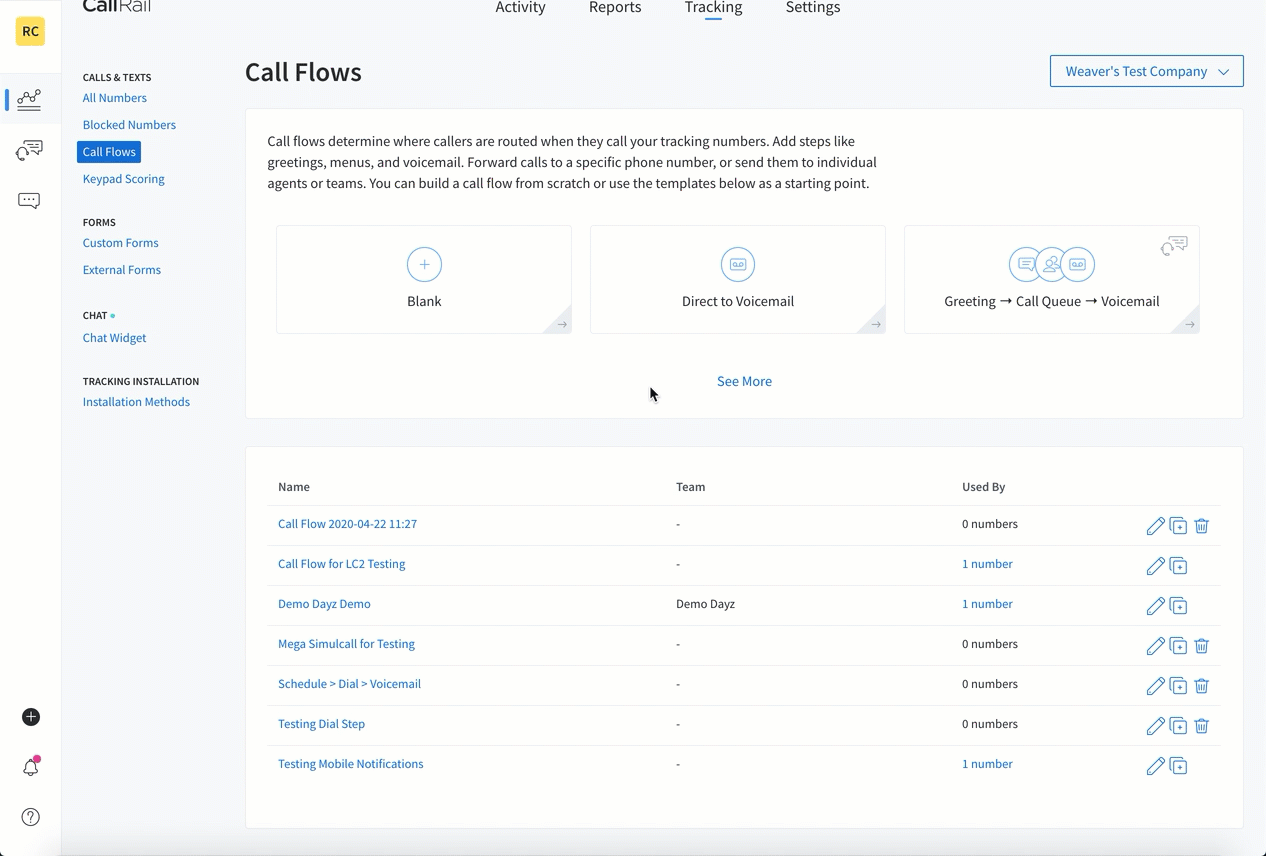
Taking these simple steps will unclog clinic reception and significantly reduce the number of missed opportunities. The result? A highly efficient customer service that frees you up to deliver individualized patient care.
2. Call tracking optimizes marketing spend
Between keeping up with your schedule for the day, engaging with patients, and updating patient records, there’s not enough time in the day to focus on marketing your practice. Instead, you might fall for spray and pray tactics that eat up your budget and generate little to no leads.
But dental practices lose significant revenue when they don’t track marketing performance. Here’s how.
How much does each new patient cost you? Many practices don’t know for sure. Even though there is still a lot of profit margin with higher patient acquisition costs, more than 30% of dentists say they do not want to pay more than $50 for each patient acquired. That’s why some may be tempted to stop advertising when analytics suggest they’re paying $500 or more for each acquisition.
But there’s much more to marketing metrics than clicks.
Call tracking makes it possible to see which ads, posts, and campaigns inspire calls. It gives you a complete view of your campaigns and helps you invest more in the right places (and less in the wrong ones). With call tracking, you’ll likely learn that your acquisition cost is actually much lower than you thought — perhaps $50 (sometimes even less!) versus $500.
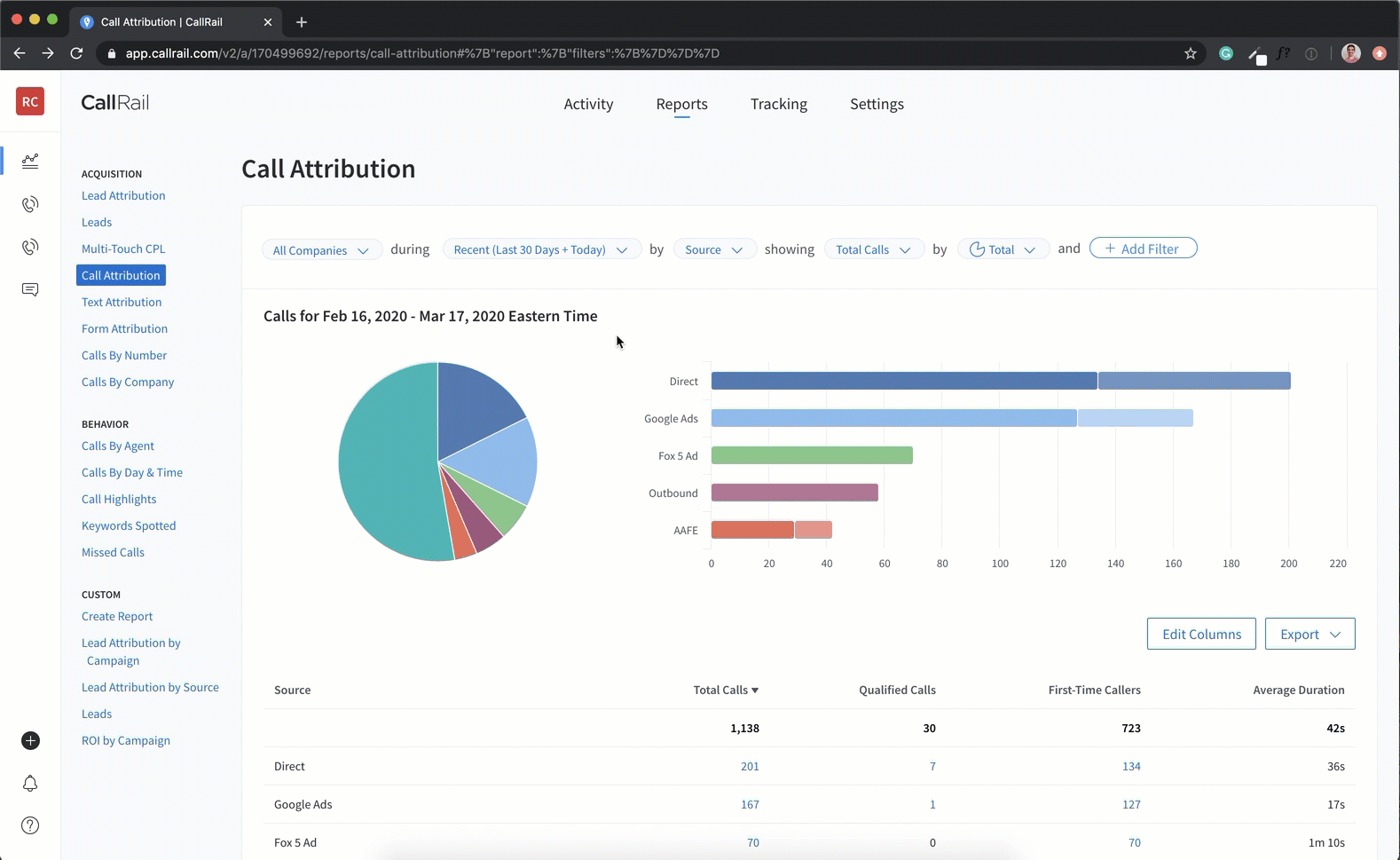
You also have to consider patient lifetime value — a loyal dental patient will ultimately be worth several thousand dollars to your clinic, perhaps even more if you deliver exceptional service. Make them happy, and they’ll keep their dentist for a long time!
Another benefit of call tracking is that it gives you an overall picture of your marketing’s effectiveness. By having a better understanding of incoming call quality, you can optimize digital ad and pay-per-click (PPC) campaigns to improve their performance. For example, if you find that some ads are not delivering quality leads, you can end those campaigns and reallocate your budget to a channel that does — increasing conversions.
As a web marketing agency, this is the approach we take at Bleu 3. We use the insights from call tracking to regularly make improvements to our dental clients’ campaigns. Since call tracking shows us what’s working, what isn’t, and what’s working optimally, we can determine with complete accuracy the cost of acquiring new patients and their value, plus ways to reduce acquisition costs.
We also analyze call recordings for commonly asked questions to help us orchestrate campaigns and announcements to answer them. That’s how we help our dental clients stay top of mind with their target audience — delivering ROI and increasing the bottom line.
Getting started with call tracking
Now that you know the advantages of setting up call tracking, where do you start? Easy: find a call tracking provider that works best for you. At Bleu 3, our call tracking provider is CallRail.
Not only is CallRail considered the leading provider for call tracking software by G2, it’s by far the easiest to set up and use. They have an intuitive and well-designed interface that helps our dental clients easily understand their marketing performance at a glance.
Setting up Call Tracking
Using new technology can be daunting, but call tracking is easy to set up — even if you don't consider yourself tech-savvy. In less than 10 minutes, you'll have everything you need to start tracking phone calls. The first step is to create an account. Then you're ready to go!
CallRail offers multiple ways to set up phone numbers for call tracking. Not only can you configure a new phone number, it’s also possible to port your existing business phone numbers to the call tracking software.
The CallRail number creation wizard will guide you. Each time you create a new number, you'll answer a few simple questions concerning your campaign and objectives. Then, you'll select your call tracking number and configure your recording preferences. After you've completed these few steps, your call tracking number will be active and ready to start receiving calls immediately.
If you are using DNI, you’ll need to copy and paste a JavaScript snippet on your website. This is how CallRail automatically swaps your existing numbers with the call tracking numbers that were selected through the platform.
You can perform the installation manually or through integrated platforms such as Google Tag Manager, WordPress, and more (here’s a list of all their integrations). Complete and detailed installation instructions can be obtained in the JavaScript snippet installation help article.
Whether you are creating call tracking numbers for a website or a print advertisement, you’ll find the answers to all your questions in the FAQ section of the number creation wizard.
CallRail's dashboard is user friendly and offers you simplified and easy to understand information. You'll be able to quickly view the number of calls coming from each ad, campaign, or channel. Each of the unique call tracking numbers you configure will give you an overview of what works best for your dental clinic, in addition to presenting a lot of important data when it comes to spending your ad budget.
With just a few clicks, it’s possible to create notifications for each call tracking number to alert your team or employees of all incoming or missed calls, including voicemail messages. Once you’re familiar with the tools, settings, and options offered by CallRail, it’ll be easy to determine which campaigns are effective by analyzing your call statistics.
CallRail recommends making a test call to one of the numbers created to confirm everything’s working correctly. Simply use a different phone number from the destination phone number, such as a cell phone. If everything’s set up properly, the destination phone will ring when you dial the call tracking number.
Get the most out of CallRail by setting up conversion tracking and linking your ads
The CallRail platform allows you to efficiently track calls and count them as conversions in Google Ads, together with your Google Analytics goals. By using Call Tracking for website visitors and configuring goals in Google Analytics, it’s possible to import them directly into your Google Ads account. When you merge the two applications, you'll be able to track conversions received in Google Analytics.
Through visitor tracking, CallRail captures the Google Click Identifier for every visitor on your dental clinic website. When the platform receives a call, a notification is sent to Google Analytics, specifying the Google Click Identifier. Google Ads will recognize this call and interpret it as a conversion.
It’s also possible to integrate conversions directly into Google Ads without importing goals. The problem with this method is that Google Analytics and Google Ads will count the conversions twice, causing errors in your statistics.
Additionally, Google Ads offers the possibility of setting up click-to-call ads directly and easily and goes hand in hand with CallRail. These simple to use ads are useful to configure ad units allowing your patients to click and call the clinic directly. Click-to-call ads tend to work exceptionally well for service-based businesses such as medical and dental clinics.
Finally, to track the keywords used by the callers, it’s necessary to add the parameter {lpurl}?keyword={keyword} to the tracking template in Google Ads. This setting will allow CallRail to record and display the keywords directly in the call log and the caller timeline.
How to interpret call analytics
At Bleu 3, we use call analytics to view statistics, collect and analyze information, and create reports about incoming phone calls. For digital marketing, this data is especially useful because it helps us optimize the performances of digital ad campaigns, the quality of landing pages, and even the website’s content.
By analyzing the calls and the caller history, we can determine where the calls are coming from, which keywords were used to find the clinic, which ads work best to generate qualified calls to our clients’ clinics and more. It also helps us get a better understanding of what target audiences really want.
Depending on your needs, it’s possible to analyze your calls and statistics regularly or for specific periods. To assess the performance of digital marketing campaigns, we recommend analyzing the data on a monthly, quarterly, or semi-annual basis. For missed calls, it can be useful to take a look at your data daily.
Another tool we rely on is CallRail’s Lead Center and reports generated by the CallRail platform to interpret and understand call analytics. These reports present the leads as a percentage of phone calls. They also reveal which advertising channel the calls came from, the specific search term the caller used, the page they arrived from, and several other pieces of relevant information.
Here are some data points you’ll want to keep an eye on.
Number of first-time callers
If you only look at call volume, you’ll inevitably end up counting existing patients who rely on a quick internet search or a consumer review site like Yelp to find your phone number. With call tracking software, you’ll be able to compare the total volume of calls versus the number of new callers.
This way, you can accurately assess the number of new patients acquired and several other important data points. Therefore, it’s essential to analyze how many new calls a campaign generated before drawing conclusions about its effectiveness.
Landing page performance
With call tracking and DNI, it’s simple and efficient to evaluate the performance of landing pages built on your website, among others. This allows you to know which specific pages are efficiently generating calls.
If some pages do not convert as expected, it’s important to make the necessary changes. By analyzing CallRail's calls and statistics, we can better understand what works in digital ad campaigns to repeat proven moves for our dental clients.
Visitor-level tracking
When using DNI, visitor-level tracking can help you discover precisely what drives new patients to your website or dental clinic. If you offer a particular service, such as Invisalign orthodontic treatments, you’ll want to know how many users are searching for keywords related to that topic.
Call tracking gives you different ways to examine keyword effectiveness. By looking at these call analytics and statistics, you can compare the competition, price, and ROI of a given keyword to see if the search term is worth its cost.
Visitor timeline
CallRail’s Call Tracking is easy to use and focused on the user experience. And it provides visibility into the patient’s buying journey. Through the visitor timelines, you can see how a patient got to your website, the number of web pages they visited before picking up the phone, and all the caller’s actions up to the conversion.
In CallRail, the customer’s path and reason for their call are available to you at a glance. It’ll help you decide whether you need to add relevant content to your landing pages — ensuring that the customer's question is answered directly on your website while increasing the likelihood they’ll contact your dental clinic to book an appointment.
In turn, the data collected on the visitor timeline will enable your staff to give patients in the clinic a better customer experience.
Bringing it together
So whatever happened with Miles of Smiles? First, we hate to disappoint, but that’s not the practice’s real name.
But if you guessed they were able to turn their fortunes around with call tracking software, you’re right. Before “Miles of Smiles” invested in the tool, front office staff answered about 60 to 70% of all calls. That’s a lot of missed opportunities.
Now that they’ve been using call tracking, Miles of Smiles has been able to take patient leads back — following up with missed calls to schedule new appointments. Not only have they increased conversion rates, but the new level of customer service has also helped them retain current patients.
With a call tracking software like CallRail, you can obtain the insights and data you need to grow your dental practice, increase appointment scheduling, acquire new patients, and invest your marketing dollars smarter and more accurately than before.
Stop wasting your time and money on efforts that don't pay off. Choose quantifiable data and call recordings collected through call tracking and use them to replicate your successful moves and increase your ROI.





